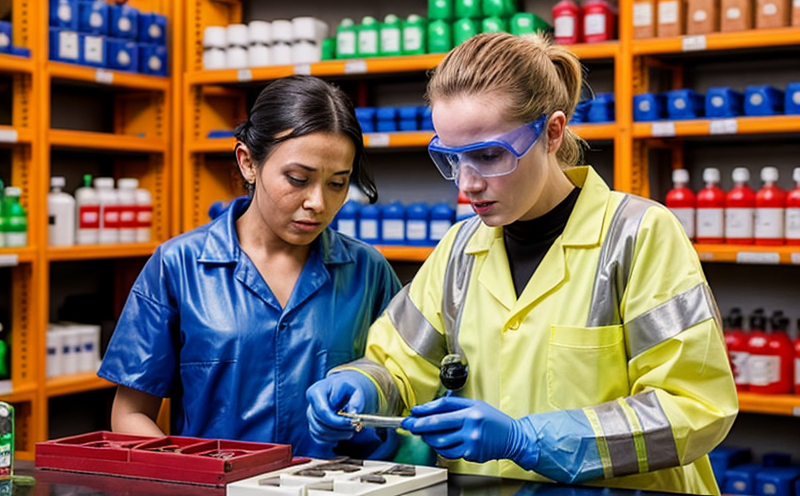ISO 10304 Ion Chromatography Testing of Hazardous Substances
The ISO 10304 standard for ion chromatography is a critical tool in the analysis and quantification of hazardous substances. This testing method provides accurate, reproducible results that are essential for ensuring compliance with trade regulations and environmental standards.
Ion chromatography (IC) separates charged species such as anions and cations based on their interactions with a stationary phase. The technique involves the injection of a sample into a column packed with an ion-exchange resin. Ions in the sample interact with this resin, causing them to elute from the column at specific times.
The primary advantage of using ISO 10304 for hazardous substances testing is its ability to detect and quantify even trace amounts of contaminants. This makes it particularly useful in sectors such as government trade facilitation and R&D where precision and accuracy are paramount. The method can analyze a wide range of ions including chloride, fluoride, nitrate, sulfate, borate, phosphate, silicate, arsenate, molybdate, and tungstate.
For the testing to be effective, proper sample preparation is crucial. This includes filtering samples to remove particulates, diluting if necessary, and ensuring that the correct volume of the sample is introduced into the chromatography system. The choice of eluent and gradient program can also significantly influence the outcome of the test.
Instrumentation plays a critical role in ISO 10304 testing. Modern ion chromatographs often come equipped with diode array detectors (DAD), which provide additional spectral information that enhances data interpretation. This advanced technology allows for more precise identification and quantification of ions, making it an ideal choice for complex samples.
The acceptance criteria for ISO 10304 testing are stringent. Samples must meet specified limits for each ion being tested. Any deviations from these limits can indicate potential issues with the sample or the process itself, necessitating further investigation and corrective actions.
Government agencies rely heavily on ISO 10304 ion chromatography to ensure that imported goods comply with safety regulations. This testing is particularly important for hazardous substances such as heavy metals, pesticides, and other toxins that could pose risks if present in unacceptable concentrations.
In the realm of trade facilitation, ISO 10304 ion chromatography helps streamline compliance processes by providing reliable data quickly. This allows businesses to move goods through customs more efficiently while ensuring they meet all necessary standards.
Customer Impact and Satisfaction
- Enhanced Compliance: Ensures that all products adhere strictly to international regulations regarding hazardous substances.
- Increased Efficiency: Reduces the time required for testing, thereby speeding up trade processes.
- Better Decision-Making: Provides accurate and reliable data which aids in making informed decisions about product safety and environmental impact.
- Improved Reputation: Demonstrates a commitment to quality and safety standards, enhancing the reputation of your business.
Environmental and Sustainability Contributions
The use of ISO 10304 ion chromatography for hazardous substance testing contributes positively to environmental sustainability by helping industries identify and reduce their emissions of harmful substances. This not only protects human health but also helps in preserving natural resources.
By adhering to strict testing protocols, businesses can ensure that they are minimizing the release of pollutants into the environment. This aligns with broader sustainability goals such as reducing carbon footprints and promoting circular economy practices.
Use Cases and Application Examples
| Use Case | Description |
|---|---|
| Customs Compliance | Ensure that imported goods meet local hazardous substance regulations. |
| R&D and Development | Evaluate new products for potential hazardous elements before market release. |
| Environmental Monitoring | Detect contamination levels in water bodies to implement remediation strategies. |
| Supply Chain Management | Monitor the integrity of supply chains by verifying the absence of harmful substances. |





